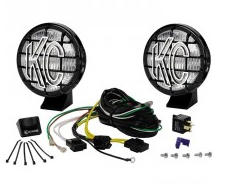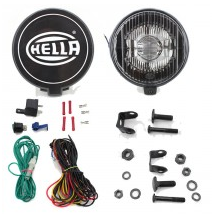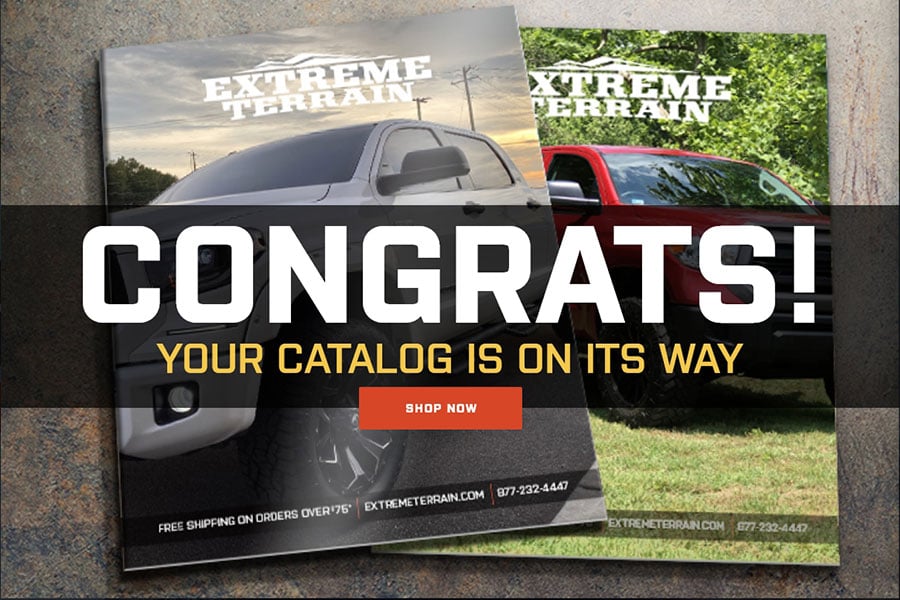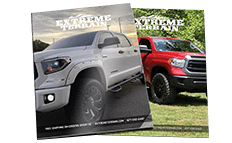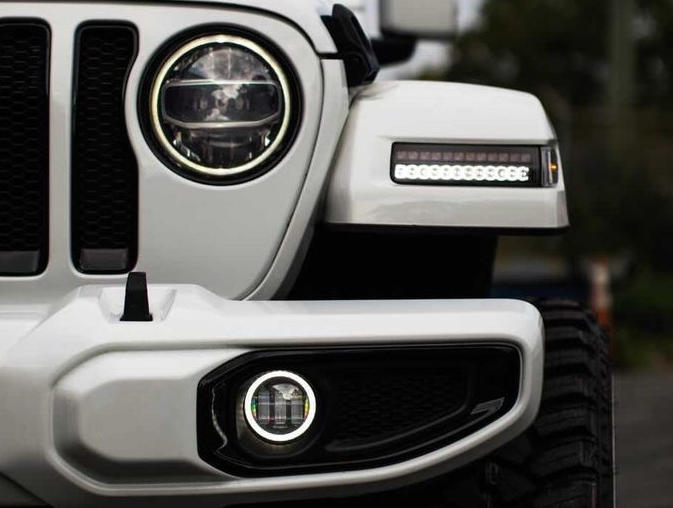


The Differences Between Fog Lights & Driving Lights
For every Jeep Wrangler owner, having a good lighting system can either make or break your off-roading experience. This is because most trails are poorly illuminated. If your Jeep lighting system is bad, you may find it difficult to navigate through the terrains in the dark or when inclement weather strikes.
That is why, as an avid off-roader, you must ensure that your Jeep lighting system is up to the task before you hit the trail.
More than ever before, Jeep lights and accessories are gaining popularity, thanks to the advent of durable and versatile aftermarket models. Now, many Jeepers are aware of their importance in all terrains, and they are rushing to have them installed on their rig. This is so, not only because they look so good (and they do!), but there are a lot of conditions where you need extra lighting.
Notably, Jeep lighting systems will be of immense benefit to anyone living far from the city, where they have to contend with crossing deer, bears, moose, or sasquatch. Similarly, they can be a lifesaver during extreme weather conditions, where you find it difficult to have a clear view of the terrain.
Additionally, many Jeepers find it necessary to have a viable lighting system on a work truck, or an emergency vehicle, where light is needed for rescue and safety concerns. Whatever the reason, lights are a big part of Jeeps and how they are used.
Before we proceed, take note of the following:
There Are Two Major Types of Lighting Solutions; Driving Lights and Fog Lights.
Fog lights are normally mounted at or below bumper level, right at about the height of your headlights. These are lights that illuminate the road for a short distance, just in front of the vehicle. They are meant to pierce the fog and airborne particles (such as dust) close to the front of your vehicle. Usually, fog lights typically have a beam pattern that shines wide, for the sides, and down, for the short distance on the road. This pattern helps keep the lights below your eye level and from bouncing back off the fog into your face.
On the other hand, driving lights are for distance, similar to the high beams you already have. However, they are aimed and dispersed forward, usually in a rectangular pattern, depending on the design. The idea is to light up far ahead and along the road (trails) so that you can see the terrain very clearly, as well as the trail objects long before you reach them. Lights like these are usually mounted at the same height or preferably higher than your factory headlights. The goal is to use Driving lights in conjunction with your high beams to get more clarity on the trail.
Different lighting companies have different designs on how their product will shine and light up the night. So if you are looking for the most efficient ways to mount your lighting systems and get them at their optimum best, your options are almost unlimited.
However, it is important to go for the lighting system that will work best for you (Fog lights vs. Driving lights) and work that into how they will be installed. If you need a driving light, you will want to figure out just where on your Jeep it will be mounted. It may be on the roof, on the windshield frame. You should also map out how many lights you plan to use and how much power will be needed to keep the lights at their optimum best. Some drivers prefer to mount their lights up high at the roof level to shine over them while others like them about hood height. In the end, it all boils down to your personal choice and preference.
With fog lights, you have to decide where on your bumper to mount them. Usually, you may choose to mount them in the bumper, above the bumper, and sometimes even below it. The setup is up to you, depending on your goals and how you will be using them.
Now that you know the basic differences between the two types of most commonly used lighting systems and where you can mount them on your Jeep or Truck. We also want to mention that you can get these lighting systems or any other Jeep lights in the vast array of products we carry. Usually, there are different kinds of bulbs within these lighting products. While we aren't going deep into this at this time, we will briefly highlight the basic information to give you an idea of how they work.
HALOGEN BULBS
Halogen bulbs are used on most vehicles made today. They are a common stock light bulb, although they have been around in one form or another since 1882. A modern Halogen bulb contains the gas Halogen, (though it can also contain Xenon or Krypton) and burns brighter and more efficient than older glass headlights. There's a boatload of science on how they work, but we won't cram those 100 pages of scientific theory here. Compared to other bulbs, Halogen bulbs are typically the least expensive choice.
HID (HIGH INTENSITY DISCHARGE) BULBS
HID bulbs are similar to a fluorescent light, like in your home. They even use an external ballast in most cases (or the ballast is part of the bulb's base). HIDs use a Tungsten filament and are usually filled with Xenon gas. They come in different combinations, but one notable feature about them is that they are very bright and energy-efficient. These bulbs can cost more than a Halogen, because of the complicated technology, materials, and manufacturing.
LED (LIGHT EMITTING DIODE) BULBS
LED bulbs are the new kid on the block as far as popularity and adoption in the auto and truck markets are concerned. The drawback is that they can be the most expensive option of the three types of bulbs, but they have some positive aspects when used. They give off a solid state (electronic) light that doesn't rely on incandescence or electroluminescent properties. They have lower energy requirements, a longer bulb life, and can be activated with a digital switch. The more LED lights find their way into our daily lives, the more they are manufactured. Eventually, this will create a situation where the prices go down as the demand goes up.
So, which bulb is the best out of them all? That's a big question and it's not cut and dry, because there are too many variables. When deciding on your driving or fog light, the type of bulbs used will factor into your choice. It can also affect pricing. Obviously, an LED light from Rigid will typically cost more than a Halogen one. It's a matter of choice, as you will have to decide where to mount the lights and how they will be used before you conclude on which light best fits your Jeep or Truck.
Here at the ExtremeTerrain, we carry a very wide range of lighting solutions!
Here are some of the top brands you want to browse to find your lights:
- KC HiLights – One of the best-known lighting brands for decades
- Hella Lighting – European style and designs
- PIAA Lights – State of the art electronics and off-road engineering
- JW Speaker Lighting – Aftermarket and OEM upgrades for lighting
- Oracle Lighting – LED and HALO systems
- Delta Lighting – Xenon and HALO lighting solutions
- Truck-Lite – Solid state bright light replacements
- Rigid Industries Lighting – LED and Light Bar technologies
Below are some other manufacturers who are beginning to add new types of lighting products to their lines that you may be interested in:
- Rough Country Lighting – Brackets, light bars, and LED lighting
- Rugged Ridge Lighting – LED and Halogen lights and kits
- ProComp Lighting – Flood lights and LED bars
- LOD Lighting – Armor lights and 3rd brake light
- Putco Lighting – Interior LEDs and bulbs
- MOPAR Lighting – OEM factory and some aftermarket lighting
The important thing to know on all this is that whether you are choosing driving lights or fog lights (or both!), we have the setup you need here at ExtremeTerrain.
Whether you are planning on installing new fog lights, or you just want a set of driving lights for extra clarity in the dark, we've got them all in store for you. We offer dependable, solid, and efficient Jeep fog lights that will help illuminate the trail and provide extra clarity during inclement weather.
At ExtremeTerrain, you will find your Jeep Wrangler fog lights in all types of finish and material components. These Jeep lighting systems also come with a wide variety of light patterns and designs that will fit in different locations and positions on your Jeep.
We help our customers whenever they want to choose the best lighting for their Jeeps. We can help you too if you are looking to get the best deal on the best Jeep fog lights on the market.
Ready to light up the night? Get your Driving and Fog Lights today.
